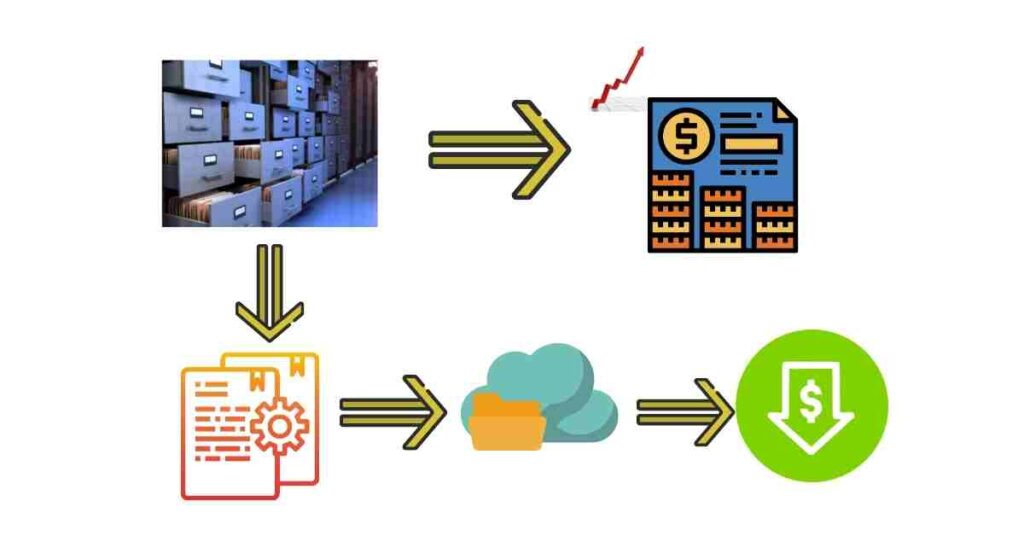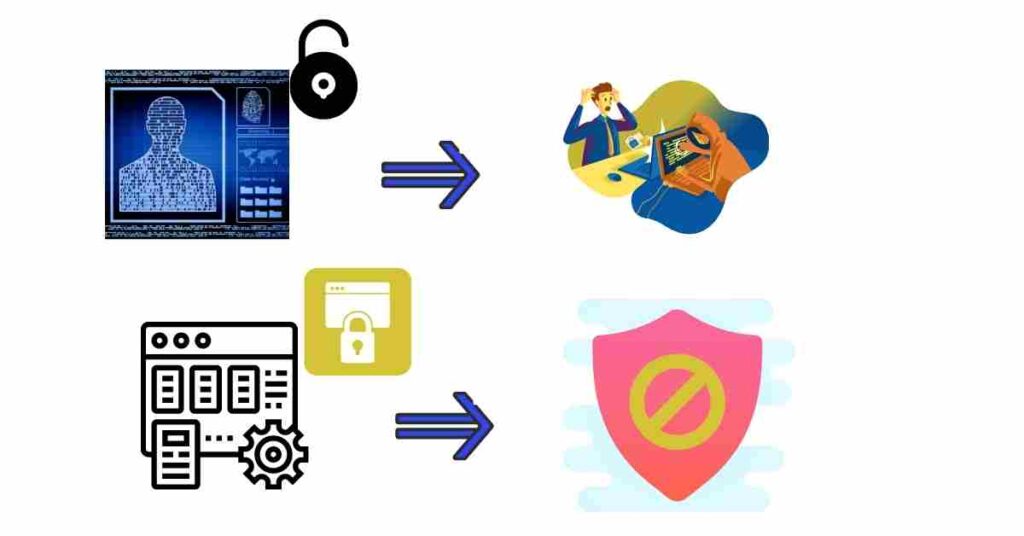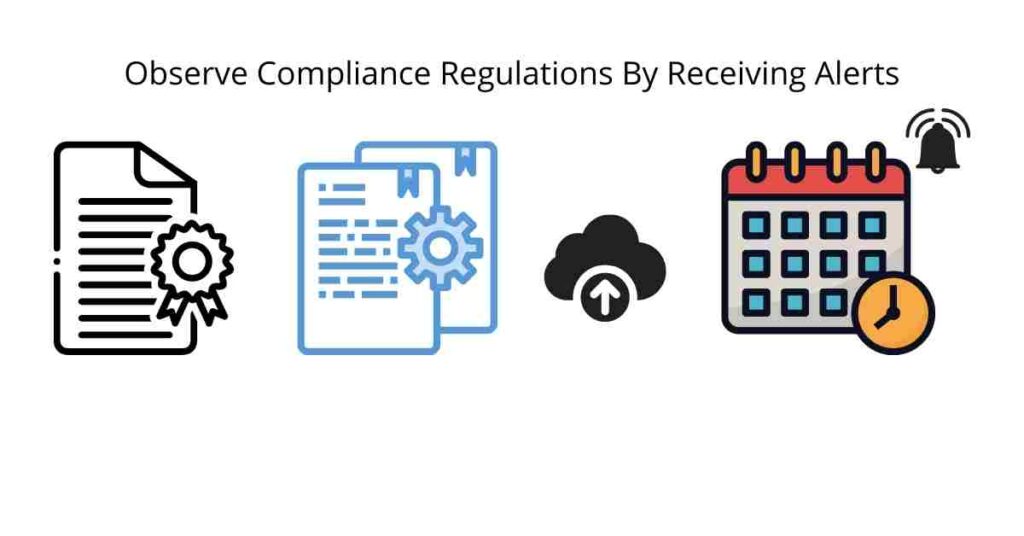Are you finding it challenging to retrieve enterprise documents on time?
Documents are essential components of your enterprise because they provide critical insights into your enterprise’s compliance, for example through policy documents.
However, making enterprise decisions based on insights from several document sources is challenging, especially when you can’t access them easily and in a timely manner.
More enterprises are going paperless to eliminate the tedious task of sifting through desk drawers and filing cabinets in search of documents.
In fact, a Xerox survey reveals that more than 80% of businesses want to shift to paperless workflows, for example when it comes to invoicing and reporting financials.
The best way to get there is through a document management system.
Simply put, a document management system is an automated business software solution that is used to store, manage, and track document information captured through a document scanner.
In this article, we’ll discuss reasons why you need a document management system for your enterprise.
Let’s get started.
1. Reduce Storage Space
The more paper documents you have in your enterprise, the more storage capacity you require. This ultimately translates into more expenses because you have to purchase and create room for storage bins and file cabinets.
Actually, a report by Colliers International reveals that office space in the U.S runs at $285 per square foot. Physical document storage takes up roughly 15% of the total office space meaning that a big portion of the budget is allocated to document storage.
Eradicating the expense of storing paper-based documents is among the benefits of a document management system because it is a software-based digital solution.
By leveraging intelligent document processing for unstructured data extraction, a document management system captures relevant information from paper documents and stores it in the cloud.

This serves as a central repository hub for all your converted documents, ultimately freeing up storage space in your enterprise.
If you have other hard-copy documents that need storage in bulk, you can easily store them off-site, like in a warehouse or vault without compromising your enterprise storage capacity.
A case study by eFileCabinet reveals that AMES was able to get rid of 60% of its filing cabinets with the eFileCabinet document management system.
AMES was able to save on the high costs of paying for offsite storage space and purchasing storage boxes as well as time spent on document retrieval.
2. To Secure Documents
Enterprises have a lot of sensitive information stored in hard-copy documentation, for example trading secrets and employee bio data.
According to a report by Varonis, 58% of companies have over 100,000 folders open to every employee.
This significantly increases the risk of data breaches due to improper handling, espionage, and exposure to cyber criminals who can easily access your database through hacking and phishing.
In addition to that, poor and insecure storage can lead to loss of essential documents through disasters like fire which can potentially put you out of business.
There are therefore invaluable advantages of a document management system, one of them being to secure sensitive enterprise information.

A document management system, through its unstructured data extraction capabilities, allows you to store your documents in the cloud, meaning that in the event of a disaster, you would still have access to your documents.
In addition to that, you can easily restrict access to sensitive information by third parties to secure it from cybercriminals as well as find out who has viewed or modified your document.
Previously, Steele Raymond depended on an insecure and non-compliant solution to cater for file-sharing needs.
Upon partnering with Hubshare, which provided a centralized repository for his files, he was able to securely upload documents and share them easily both internally and externally.
3. Improve Regulatory Compliance
Every enterprise has to meet different compliance requirements, for example annual renewal of business licenses.
However, analyzing the large volumes of unstructured data from sources like contracts, emails, and documented regulations like licenses to ensure compliance is challenging for your employees.
Many times, it so happens that documents containing policy information are not accessed on time, ultimately resulting in delayed adherence to compliance regulations. As a result, you can incur hefty fines or lose the mandate to operate.
According to a benchmark study of multinational organizations, business disruption is the most costly consequence of non-compliance with enterprises losing $5,107, 206 on average.
Fortunately, one of the benefits of a document management system is ensuring regulatory compliance.

It keeps regulatory records safe within the system and by leveraging natural language processing for unstructured data analysis, captures important information like due dates.
Machine learning algorithms then train the system to identify patterns that enable it to track information and create alerts to remind you about pending renewals or updates.
The schedules are easily automated and organized to meet compliance requirements, ultimately reducing the risk of non-compliance.
A FileHold customer in the manufacturing needed to produce near perfect products by employing ISO compliance tools but the paperwork created by these regulatory processes was time consuming and took up a lot of space.
By using FileHold document management software, the customer was able to convert documents into electronic form and separate them by barcode for enhanced compliance.
4. Easier Document Retrieval
Enterprise documents are at most times needed urgently in meetings for purposes like verifying information for better decision making.
However, having stacks of documents lined up in file cabinets and storage rooms to sift through in order to find a vital piece of information is time consuming and can be frustrating when you don’t retrieve it in good time.
A report by McKinsey indicates that knowledge workers spent 19% of their time looking for information in print documents.
This is one of the reasons why you need a document management system for your enterprise.
Depending on the solution you implement in your enterprise, one of the benefits of a document management system is that it leverages natural language processing for unstructured data extraction.

By converting it into structured data that exists in predefined formats, you can retrieve the information by a tag or keyword in a document, ultimately saving on time.
In addition to that, as long as there’s an internet connection, employees can access documents remotely to complete enterprise-related tasks.
A case study of Roosevelt University reveals that it uses the Communfire document management system for its Broadcast Space.
Employees are able to access announcements from the university easily by using keywords to retrieve documents.
5. Boost Employee Collaboration
Information sharing in your enterprise among departments is vital.
When teams work together openly, enterprise tasks and goals become more aligned leading to higher success rates of achieving a common goal.
However, this is not always the case when teams don’t have access to similar information.
In fact, different results from departments can spark conflict within the enterprise and lead to dysfunctional cross-functional teams.
Actually, according to Zippia research, 86% of employees in leadership positions blame lack of collaboration as the top reason for workplace failures.
Simplifying access to content to boost employee collaboration within your enterprise is among the advantages of a document management system.

In addition to storing your documents, a document management system makes it possible for authorized persons to access documents captured from different sources. It also gives employees access to collaborative features and edit options that make it possible for them to view and modify documents remotely.
This reduces the need for back and forth sending of documents or creating many copies that can lead to multiple errors.
One of the other benefits of a document management system is that it puts cross-functional teams at an equal level of information sharing, ultimately boosting collaboration.
Algoma was experiencing challenges with information sharing because they had many offices. It sought MHC software which integrated document management for easier information access.
Conclusion
A document management system is a valuable solution that enables you to save on time and effort in storing, tracking, and retrieving information.
In fact, the document management system revenue grew to $65 billion in 2020, according to Statista.
Some of the advantages of a document management system you can enjoy as an enterprise include improved collaboration, reduced storage space, and better document security.
Do you now see why you need a document management system for your enterprise?
If you have been struggling with non-compliance challenges, start by implementing a document management system for unstructured data analysis to enable you automate enterprise regulatory schedules for timely observance.

![5 Innovative Applications of Artificial Intelligence in Manufacturing [2021]](https://geokongo.com/wp-content/uploads/2021/09/Applications-of-Artificial-Intelligence-in-Manufacturing-2021-1024x536.jpg)


